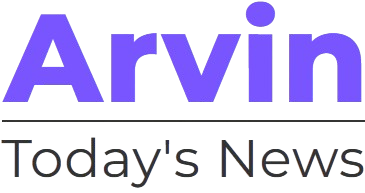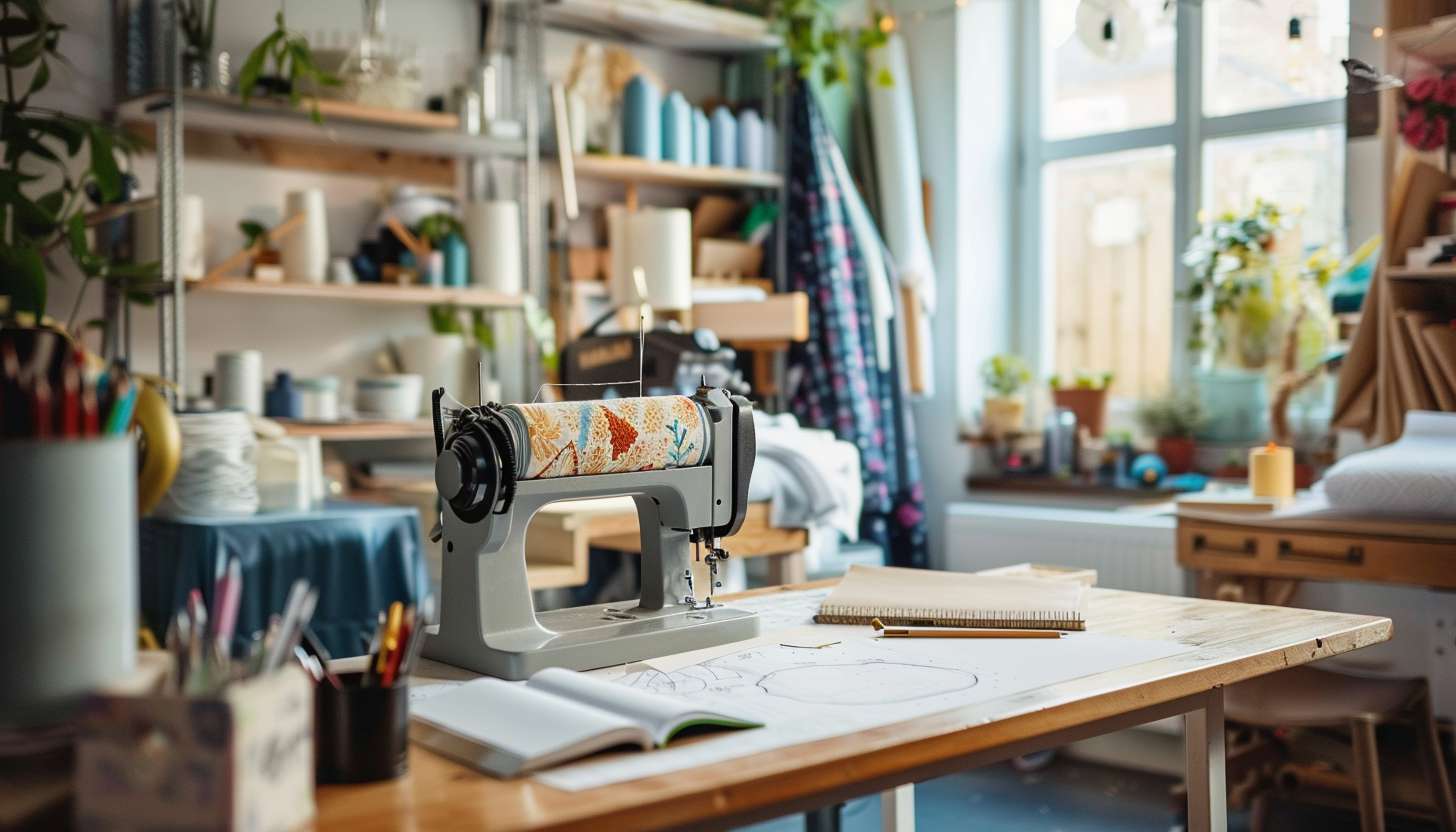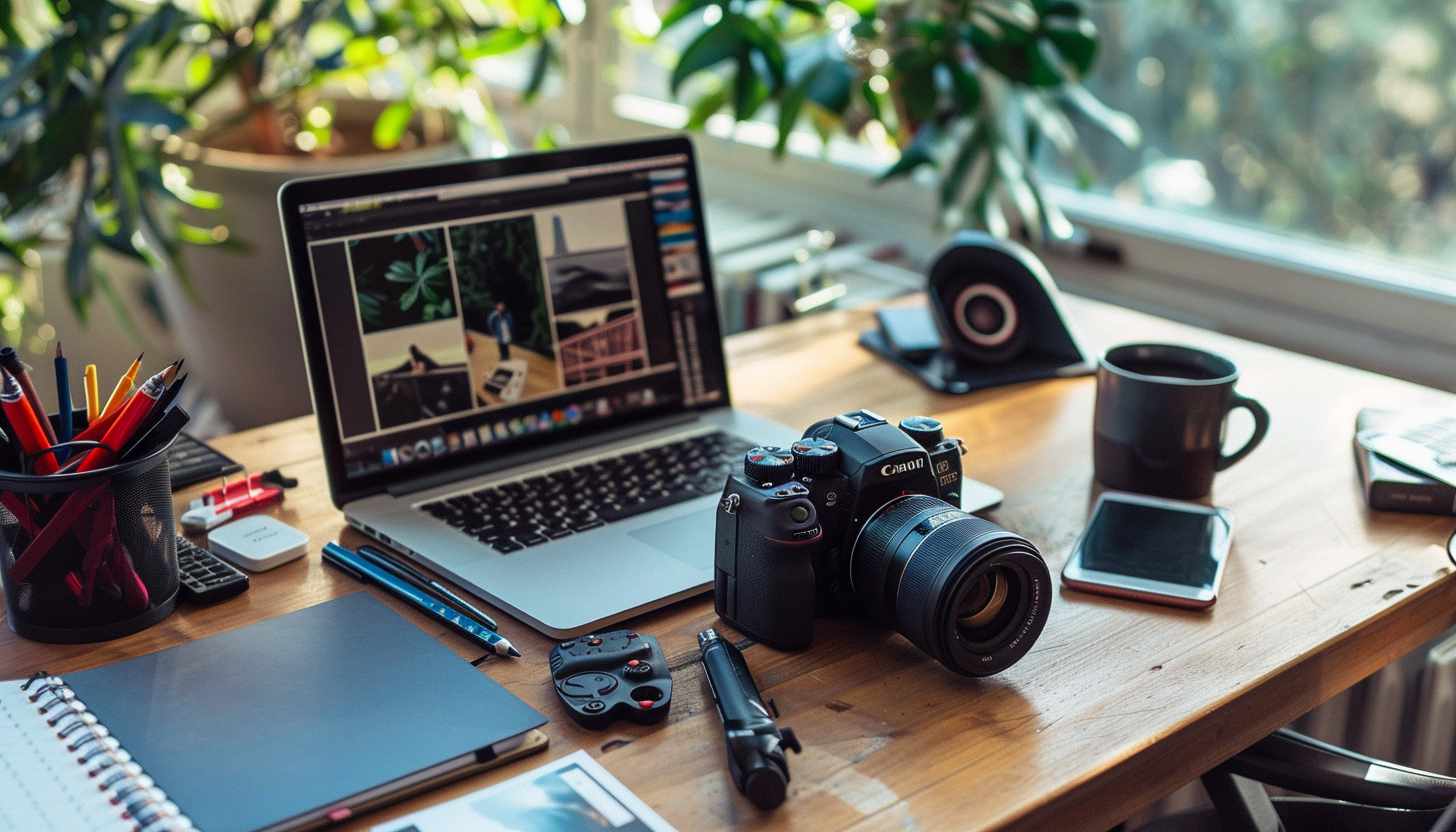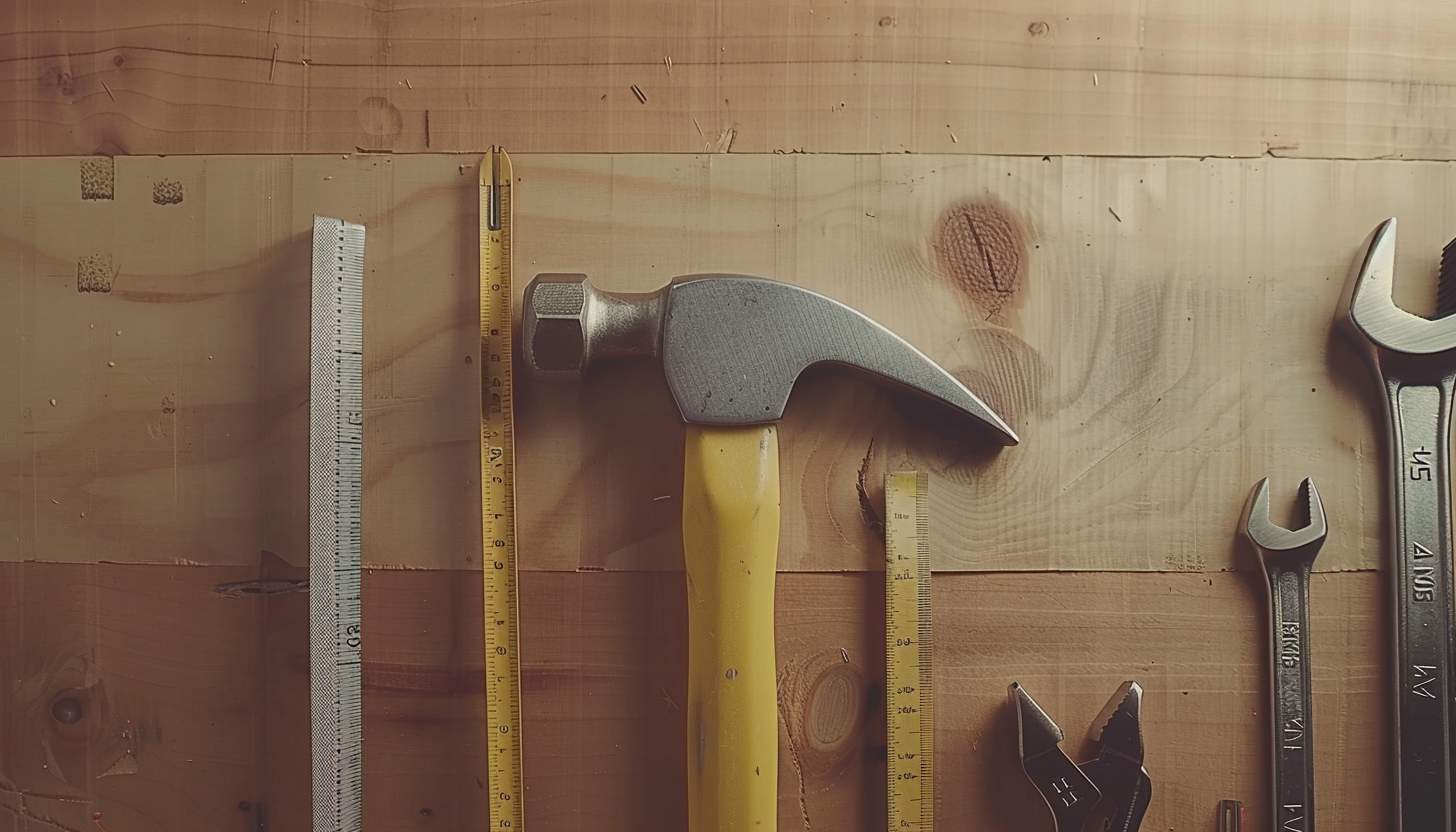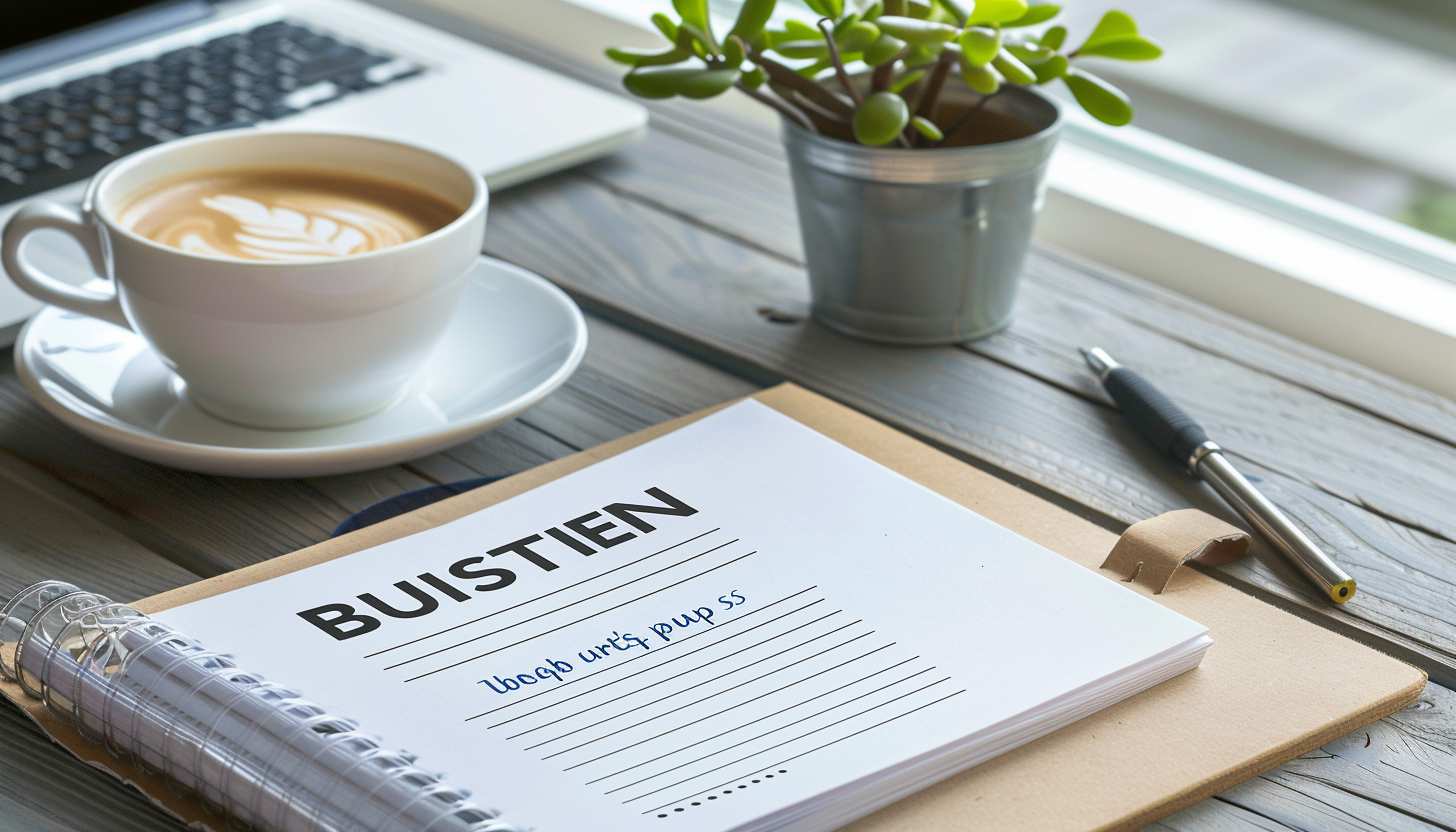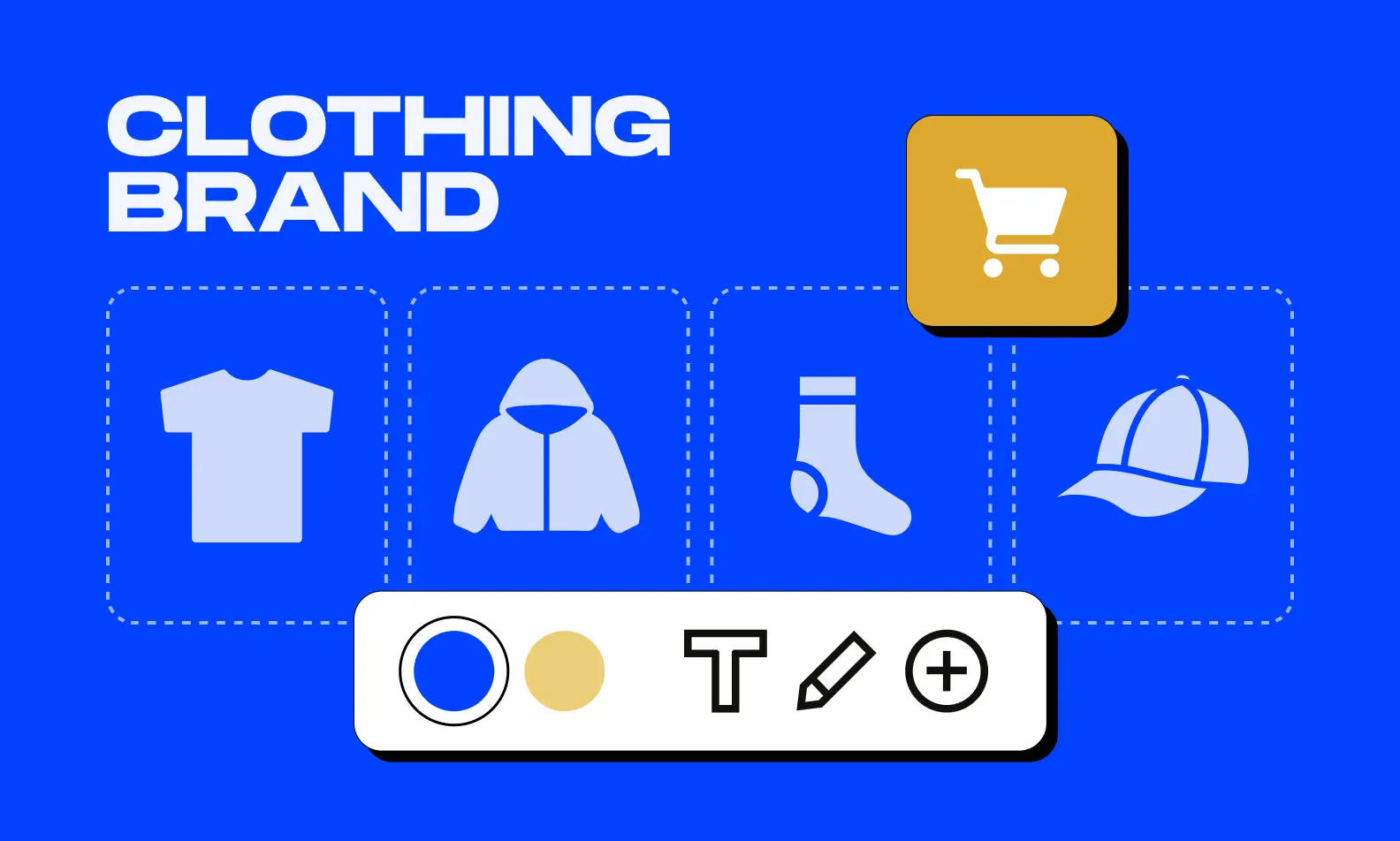Have you ever dreamed of turning your passion for fashion into a thriving business right from the comfort of your home? You’re not alone. With the global online fashion market projected to grow to $872 billion by 2023, the opportunity to carve out a niche in the clothing industry is immense. Starting a small clothing business isn’t just for those with big budgets and brick-and-mortar stores. With the right strategy, anyone can launch a boutique that reflects their unique style and caters to a growing demand for distinctive apparel choices. So, how to start a small clothing business from home?

In this blog, we’ll explore the essentials of setting up your home-based clothing business, mastering the art of wholesale purchasing, and tapping into the market of sustainable fashion. Platforms like Bundlex and Fleek illustrate the potential and accessibility of the wholesale and secondhand clothing markets, which have seen a 35% increase in consumer interest over the past year alone, providing a wealth of opportunities for new entrepreneurs. Whether you’re considering stocking up on mainstream brands or unique vintage finds, understanding these platforms can help you minimize costs while maximizing the appeal of your product offerings.
With over 70% of new businesses starting at home and the clothing sector accounting for a significant part of entrepreneurial ventures, the time has never been better to start your fashion journey.
Your clothing brand deserves a strong identity. A professional logo helps establish trust and recognition in the fashion industry. Create a standout brand image with Arvin AI Logo Designer!
Clothing Business Example
Boutique
A boutique store is a specialized type of retail business that focuses on unique, often higher-end or niche products, not typically found in larger stores.

Boutiques can focus on a specific type of clothing, like women’s fashion, men’s wear, or children’s clothing, or they can specialize even further within those categories, such as formal wear, streetwear, or artisanal and handcrafted products. They are known for their personalized service, distinctive interior decor, and careful curation of merchandise that appeals to a specific demographic or lifestyle preference.
Data from Shopify and other e-commerce platforms indicate that small to medium-sized retail businesses, including boutiques, have seen an increase in online sales by up to 30% year-over-year in recent years.
Every boutique needs a unique brand identity to attract the right customers. Whether you specialize in luxury fashion, streetwear, or sustainable clothing, your logo is the first impression you make. Design yours in minutes with Arvin AI!
Print-On-Demand
Print-On-Demand is a business model where items are printed and produced only after an order is made.

It’s a popular choice for entrepreneurs who wish to sell customized products like apparel, accessories, and home goods without holding inventory.
The adoption of POD models has been particularly notable among small to medium enterprises (SMEs), which make up approximately 70% of all POD service users, indicating the model’s accessibility and low barrier to entry.
This model allows for a wide range of designs with minimal financial risk, as products are manufactured by a third-party supplier only when a customer makes a purchase.
Printful
One of the leading print-on-demand platforms that integrates with users’ e-commerce stores to handle everything from printing to shipping.
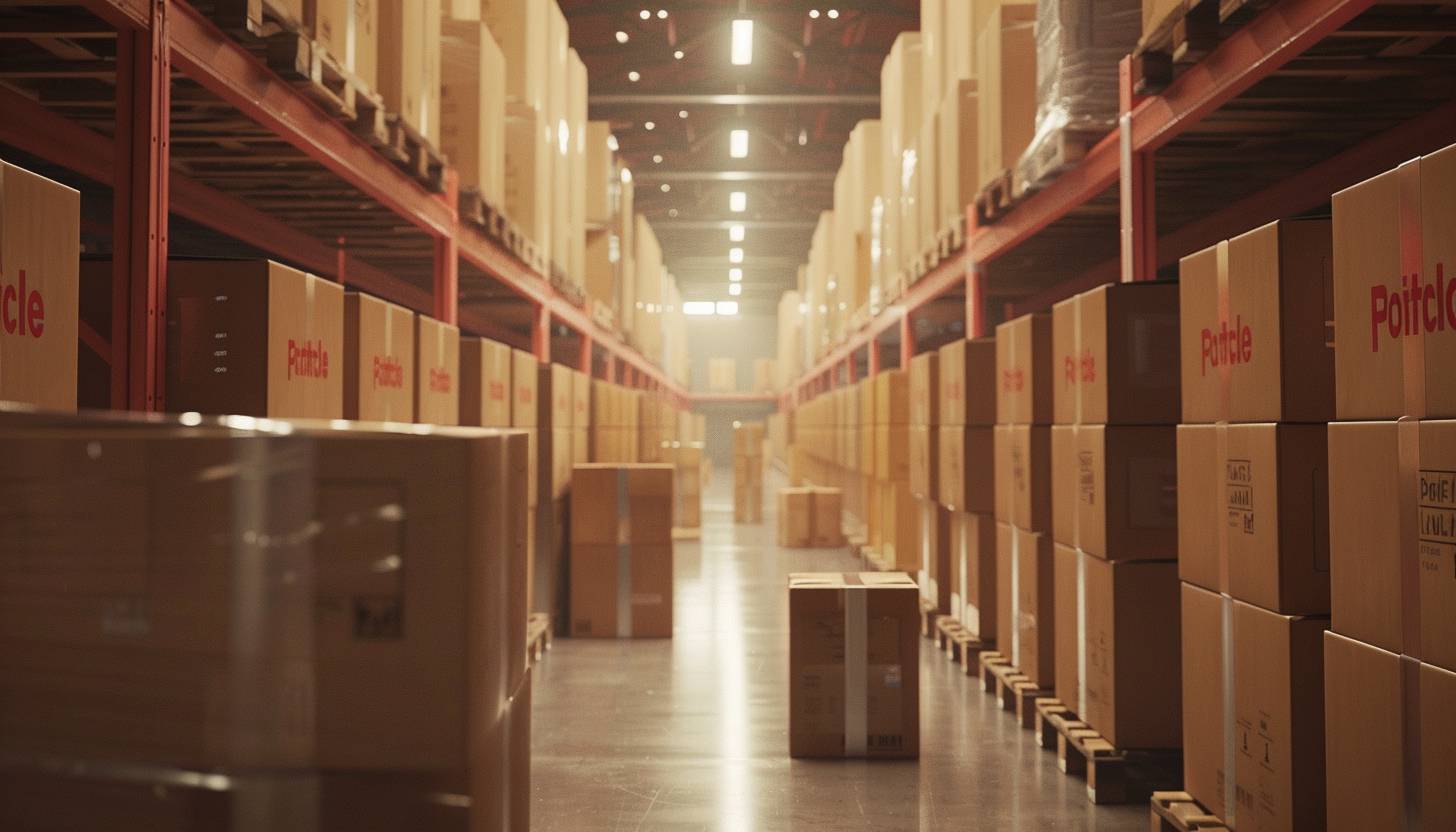
Printful allows entrepreneurs to sell a wide variety of products such as t-shirts, hats, and bags with their designs. The company reported that it fulfilled over 17 million items in a recent year, demonstrating the scalability and popularity of the POD model.
Handmade Clothing

Handmade clothing businesses focus on crafting garments that are made without mass production techniques. Often involving traditional or artisanal methods, these businesses offer unique, high-quality products that cater to consumers looking for authenticity and craftsmanship. Handmade clothing can range from custom-tailored pieces to artisanal designs that reflect cultural heritage.
Alabama Chanin

This company is a pioneer in the handmade clothing industry, known for its sustainable practices and hand-sewn garments. Founded by Natalie Chanin, it operates from Florence, Alabama, and uses organic, recycled, and locally sourced materials. Alabama Chanin promotes not only a clothing line but also a lifestyle of sustainability and mindfulness, involving the community in its production processes through workshops and open studio events.
Your handcrafted fashion deserves an elegant, custom logo that reflects its unique artistry. Arvin AI Logo Designer helps you craft a visual identity that matches your brand’s creativity.
Vintage Resale
Vintage resale involves sourcing, curating, and selling previously owned clothing that is generally 20 years or older.
The global secondhand apparel market is booming, with a projected value of $64 billion by 2024, doubling from $32 billion in 2020, according to a report by GlobalData and ThredUP.
It appeals to fashion enthusiasts looking for unique, retro, and classic pieces that can’t be found in regular stores.

Reports indicate that 52% of Millennials and 48% of Gen Z consumers prefer to buy from sustainable brands, and vintage clothing is often marketed as a sustainable option due to its reuse and recycling nature. This business model is particularly popular among eco-conscious consumers who prefer to reduce waste by recycling and reusing garments.
Beyond Retro
A leading vintage retail company that started with a single store in East London and has grown to multiple shops and a strong online presence. Beyond Retro sources its garments from charity shops, recycling companies, and directly from the public. It has carved out a niche by offering a wide selection of vintage styles from different decades, catering to diverse customer tastes. The company also places a strong emphasis on sustainability, promoting the recycling of materials and reducing waste in the fashion industry.
Athleisure Wear
Athleisure wear refers to clothing designed for workouts and other athletic activities that is also suitable for general wear or leisure purposes.

This trend highlights comfort, functionality, and style, blending sportswear with street fashion. The rise of athleisure wear is driven by increasing health awareness, changes in work environments (like more casual workspaces), and evolving fashion trends that prioritize comfort alongside style.
Lululemon Athletica
Originally founded in 1998 as a yoga apparel company, Lululemon has become a powerhouse in the athleisure industry. The brand is known for its high-quality, stylish clothing that seamlessly transitions from the yoga studio to streetwear. Lululemon’s focus on community-building through free classes and events, as well as its emphasis on innovative fabric technologies, has helped it to cultivate a loyal customer base and stand out in a crowded market.
Athleisure and specialty brands thrive on strong visual identity. A sleek, professional logo will elevate your brand above the competition. Let Arvin AI handle the design!
Specialty Apparel
Specialty apparel refers to clothing designed to meet specific niche markets or functional requirements. This includes categories such as maternity wear, adaptive clothing for people with disabilities, eco-friendly apparel, or performance gear for specific sports.

Specialty apparel targets consumer segments looking for particular features that standard clothing lines do not provide.
Tommy Hilfiger Adaptive
Recognizing the need for more inclusive fashion, Tommy Hilfiger launched its Adaptive line, designed for adults and children with disabilities. This line features modified closures, adjustable details, and innovative designs that make dressing easier for individuals with various disabilities. By integrating thoughtful design tweaks, the brand has successfully expanded its customer base and reinforced its commitment to inclusivity.
Drop-shipping
Drop-shipping is a retail fulfillment method where a store does not keep the products it sells in stock. Instead, when a store sells a product using the drop-shipping model, it purchases the item from a third party and has it shipped directly to the customer. As a result, the seller doesn’t handle the product directly. This model is especially popular in the e-commerce sector, allowing businesses to operate without holding inventory, significantly reducing overhead costs.

E-commerce sales are expected to surpass $4.2 trillion globally in 2020, and drop-shipping is an integral part of this expansion. Approximately 27% of online retailers have adopted drop-shipping as their primary method of order fulfillment.
How Can I Describe My Clothing Business?
1. Start with Your Business Name & Concept
Example: At LuxeThreads, we specialize in timeless, high-quality fashion that blends modern trends with classic elegance.
2. Define Your Niche & Target Audience
Are you selling luxury fashion, streetwear, sustainable clothing, or something else?
Who is your ideal customer—fashion-conscious millennials, eco-conscious buyers, parents shopping for kids, etc.?
- Example: We cater to young professionals who want stylish, office-to-evening wear without sacrificing comfort or affordability.
3. Highlight Your USP (Unique Selling Proposition)
Do you use sustainable fabrics, offer custom designs, focus on inclusivity, or have a special cultural influence?
- Example: Our collection is made from ethically sourced materials, with every piece crafted to support fair trade practices and reduce waste.
4. Mention Your Business Model & Sales Channels
Are you selling online, in-store, or through social media?
- Example: We operate an online boutique and pop-up stores, making our fashion accessible to trendsetters worldwide.
5. Share Your Brand Mission or Vision
What do you aim to achieve in the fashion world?
- Example: Our mission is to empower individuals to express themselves confidently through fashion while prioritizing sustainability and ethical production.
6. Add a Call to Action
- Example: Shop our latest collection and redefine your style today!
“At LuxeThreads, we believe fashion should be effortless, elegant, and eco-friendly. Specializing in modern, timeless pieces, we cater to young professionals who want to look polished without compromising comfort or sustainability. Our ethically sourced materials and minimalist designs ensure that every piece in our collection is both stylish and responsible. With an online boutique and seasonal pop-up stores, we bring fashion-forward, sustainable clothing directly to you. Explore our latest collection and redefine your wardrobe today!”
How to Start a Small Clothing Business From Home With No Money?
What Is the Minimum Budget to Start a Clothing Brand?
1. Print-on-Demand (POD) or Dropshipping – $100 to $1,000
This is the most affordable way to start a clothing brand because it does not require holding inventory. Instead, products are printed and shipped directly to customers after a purchase is made.
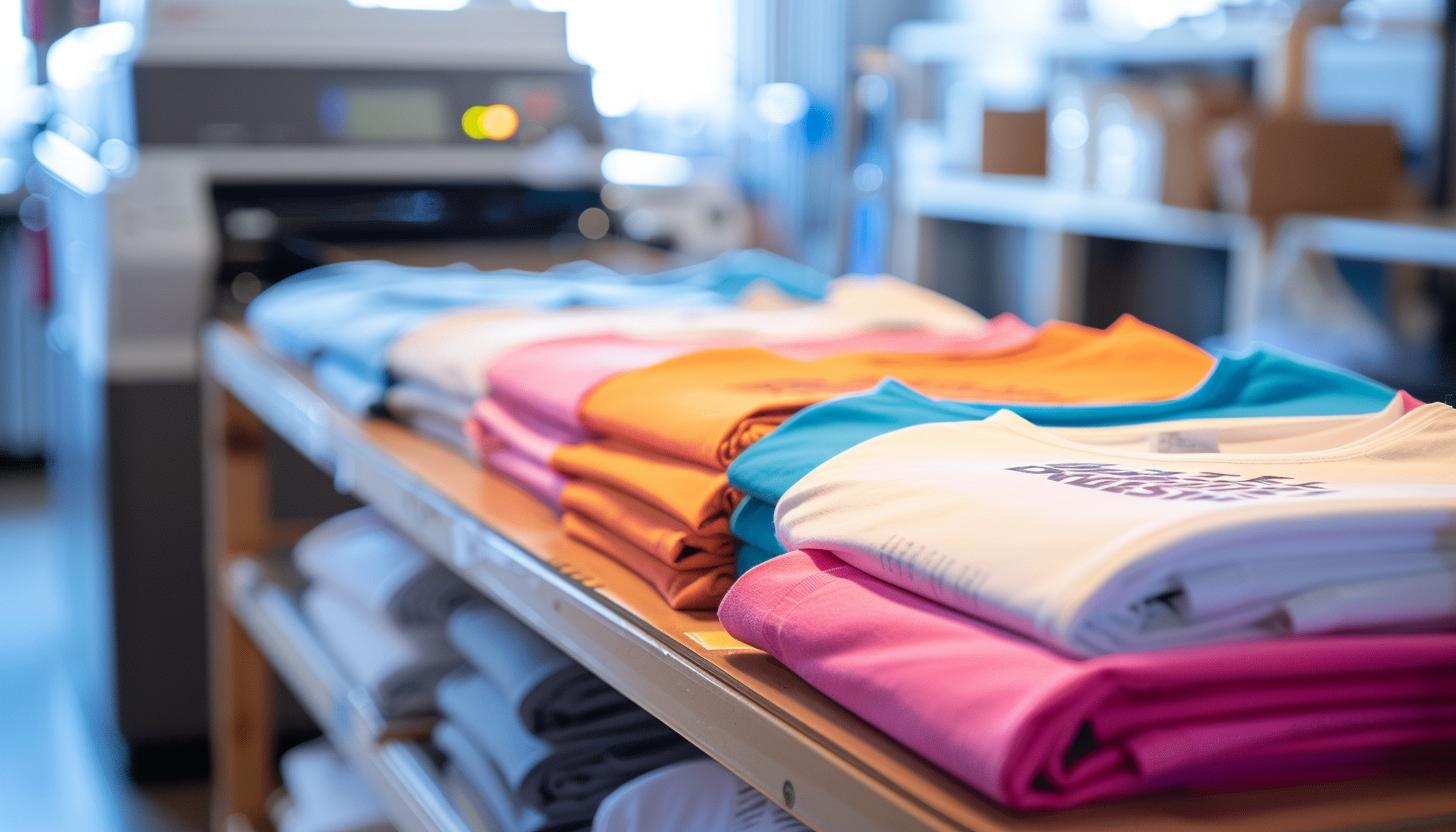
Estimated Costs:
- Website setup (domain, hosting, Shopify or Etsy fees) – $50 to $200
- Design creation (hiring a designer or using design tools) – $50 to $500
Strong branding is key to any successful clothing business. While working with a professional designer is a great investment, it’s not always feasible for new entrepreneurs.
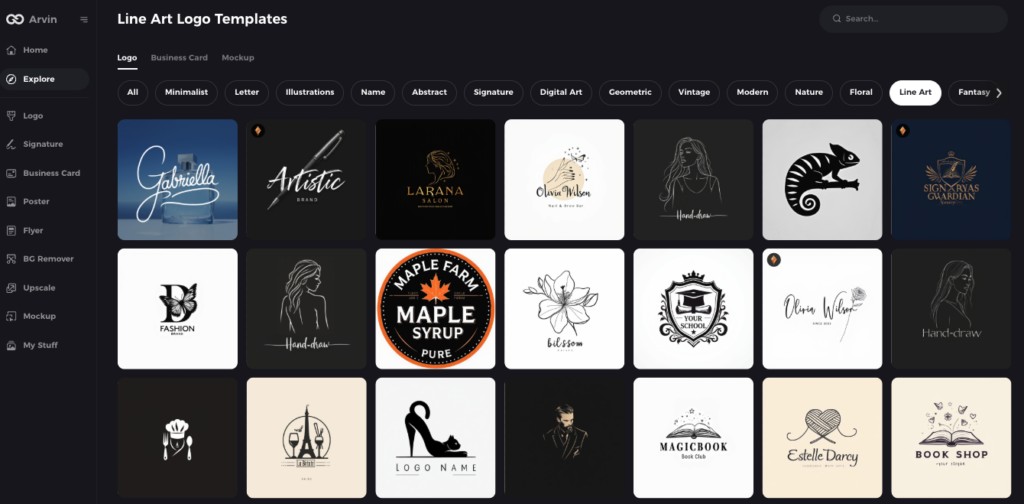
Arvin AI Logo Designer provides an affordable, high-quality alternative, allowing you to instantly create a logo that aligns with your brand’s identity.
3. Sample orders (to check quality before selling) – $50 to $300
4. Marketing and advertising (social media ads, influencer collaborations) – $200 to $500
Total Minimum Budget: Around $300–$500 if you create your own designs and rely on organic social media marketing instead of paid ads.
This model is ideal for those who want to launch a brand quickly without upfront inventory costs. However, profit margins are lower because fulfillment and printing fees are handled by third-party providers.
2. Handmade or DIY Clothing (Knitting, Embroidery, Upcycling) – $500 to $2,500
For those who want to sell handmade, custom, or upcycled clothing, the budget depends on the cost of raw materials, tools, and branding.

Estimated Costs:
- Materials (yarn, fabric, thread, embellishments) – $200 to $1,000
- Tools & equipment (sewing machine, knitting needles, embroidery kits) – $100 to $500
- Branding elements (custom labels, packaging, tags) – $50 to $300
- Online store setup (Shopify, Etsy, WooCommerce) – $50 to $200
- Marketing (social media promotions, small paid ads, influencer collaborations) – $100 to $500
Total Minimum Budget: $500–$1,000 if you start with limited designs, use organic marketing strategies, and leverage an existing customer base (friends, family, and word-of-mouth).
This model is great for those who want to sell unique, handcrafted clothing and are comfortable making items themselves. However, scaling can be challenging as each piece is made by hand, limiting production capacity.
Private label clothing needs a strong brand identity. Whether you’re relabeling wholesale pieces or creating custom designs, a professional logo is a must. Get yours with Arvin AI!
3. Small-Batch Production (Local Manufacturer or Self-Sewing) – $2,000 to $10,000
A more structured clothing brand typically involves small-batch production. This means working with local manufacturers or producing clothing in-house on a limited scale before expanding.

Estimated Costs:
- Fabric sourcing (high-quality materials in small quantities) – $500 to $2,000
- Production costs (creating 10–50 pieces) – $1,000 to $5,000
- Branding and packaging (custom labels, eco-friendly packaging, hang tags) – $200 to $1,000
- Website development (domain, hosting, professional design, e-commerce setup) – $300 to $800
- Marketing budget (ads, influencer partnerships, promotional content) – $500 to $2,000
Total Minimum Budget: Around $2,500–$5,000 if you begin with a small collection and limit initial marketing expenses.
This approach allows for more control over product quality and brand identity. However, it requires a larger upfront investment and proper inventory management.
4. Large-Scale Clothing Brand (Mass Production & Wholesale) – $10,000+
For those who want to enter the market at a larger scale, bulk production through overseas or domestic manufacturers is required. This is suitable for brands aiming to sell in retail stores, wholesale, or through an established e-commerce platform.

Estimated Costs:
- Bulk fabric purchase (sourcing from textile manufacturers) – $3,000+
- Large-scale manufacturing (production of 100+ units per design) – $5,000+
- Warehousing or storage space – $1,000+
- Professional branding and packaging (custom boxes, designer labels, high-end marketing materials) – $1,000+
- Website and advertising (high-quality e-commerce site, social media campaigns, PR outreach) – $3,000+
Total Minimum Budget: $10,000–$50,000+, depending on production volume and marketing efforts.
This model offers greater scalability, but it comes with financial risks, as unsold inventory can lead to losses.
Final Considerations
- If your budget is under $1,000, print-on-demand or handmade fashion is the best option since they require minimal upfront investment.
- A budget between $2,000 and $5,000 allows for small-batch production with more control over quality and branding.
- A budget of $10,000 or more is required for mass production, wholesale partnerships, and large-scale marketing campaigns.
Can I Start A Shopify Store With No Money?
Technically, you cannot start a Shopify store with absolutely no money, but you can launch it with a very low budget if you’re strategic. Shopify offers a free trial (usually 3 days, sometimes extended promotions), but after that, you’ll need to pay for a plan. However, there are ways to minimize costs and start selling with almost no upfront investment.
How to Start a Shopify Store With Minimal or No Money
1. Use Shopify’s Free Trial to Set Up Your Store
Shopify provides a 3-day free trial, and sometimes they have extended promos (e.g., $1/month for three months). During this time, you can build your store, design your branding, and prepare for launch. However, you won’t be able to start selling unless you subscribe to a Shopify plan (starting at $39/month after the trial).
2. Choose a Print-on-Demand (POD) or Dropshipping Model
Services like Printful, Printify, or Gelato allow you to sell custom designs on clothing, mugs, and accessories without upfront inventory costs.

You only pay for production when you make a sale. On the other hand, like DSers (AliExpress), Zendrop, or Spocket, you can list products in your store without buying inventory upfront. When a customer places an order, the supplier ships it directly.
Why this works:
- No inventory costs.
- No need for bulk manufacturing or warehousing.
- You only pay for products once you receive a sale.
3. Use Free Shopify Themes and Branding Tools
Shopify has free store themes like Dawn, Sense, and Craft that look professional without requiring a web designer. Use Canva (free version) to design a logo, banners, and product images. Write product descriptions yourself to save on content creation costs.
4. Set Up Free Marketing Strategies
Organic Social Media Marketing:
Use Instagram, TikTok, and Pinterest to showcase your products. Leverage trending sounds and hashtags to gain visibility.
Facebook Marketplace & Buy/Sell Groups:
If you have a local audience, list your products in buy/sell groups to get early customers without paying for ads.
SEO (Search Engine Optimization):
Write optimized product descriptions so your store appears in Google searches.
Influencer Partnerships (Affiliate Marketing):
Instead of paying influencers upfront, offer them a commission per sale to promote your products.
5. Delay Buying a Custom Domain (Temporarily)
Shopify gives you a free store URL (e.g., yourstore.myshopify.com). While not as professional as a custom domain, it allows you to launch without spending money on a domain right away.
Later, you can buy a custom domain for $10–$20/year through Shopify or third-party providers like Namecheap or Google Domains.
6. Consider Alternative Free E-Commerce Platforms (If Shopify Feels Expensive)
Big Cartel offers a free plan (up to 5 products). Square Online has a free option but charges transaction fees. Etsy charges listing fees, but you can list a few items at minimal cost.
Minimum Budget Needed to Sell on Shopify
| Expense | Cost |
|---|---|
| Shopify Basic Plan (after trial) | $39/month |
| Custom Domain (optional) | $10–$20/year |
| Print-on-Demand or Dropshipping Startup Cost | $0 (only pay after sales) |
| Marketing (organic social media) | Free |
| Logo & Branding (Canva) | Free |
| Total Initial Cost | $0–$39+ |
Can you start with $0?
Yes, if you leverage the free trial, use a free domain, and focus on organic marketing instead of paid ads. However, after the trial ends, you’ll need to pay Shopify’s monthly fee to keep your store running.
Final Verdict:
- Yes, you can set up a Shopify store without upfront money if you use the free trial, a free Shopify URL, and a no-inventory model like dropshipping or print-on-demand.
- However, after the trial, you’ll need at least $39/month to keep the store active unless you take advantage of promotions like Shopify’s $1/month for 3 months deal (which appears occasionally).
- Marketing is key—without money for ads, focus on social media, SEO, and influencer collaborations.
How to Start a Clothing Business With Buying Wholesale?
A 2024 PYMNTS study revealed that 65% of U.S. consumers prioritize shopping at local merchants or those owned by members of their community, a significant increase from 59% in the previous year. This shift emphasizes the deep connection between small businesses and their customers.

Moreover, at JOOR, its been observed a noteworthy shift: over the past five years, the share of total wholesale transaction volume attributed to independent retailers has surged from 47% to 59%. This is indicative of a broader industry trend where independent businesses are gaining a larger market share.
Let this be a beacon of encouragement: your small or independent business holds a crucial place in the heart of the economy and the community. With a remarkable 78% of new shoppers at independent stores planning to continue their patronage, your resilience, adaptiveness, and personal touch continue to make a profound impact.
Can I Put My Own Label on Wholesale Clothing?
Yes, you can put your own label on wholesale clothing, but the process depends on the supplier’s policies, industry regulations, and your branding approach.
Private Labeling
This practice, known as private labeling, is commonly used by boutique owners, small clothing brands, and even major retailers. For example, many streetwear brands purchase blank hoodies and t-shirts from suppliers like Bella+Canvas or Gildan, remove the original labels, and replace them with their own branding. This allows them to offer a “custom” product without going through the complexities of fabric sourcing and manufacturing.

The first step in private labeling is finding a wholesale supplier that allows relabeling. Not all suppliers permit this, so you need to choose those that offer tearaway labels or completely blank apparel.
For instance, brands like Next Level Apparel and AS Colour provide high-quality basics with minimal branding, making them ideal for businesses looking to add their own logos and packaging. Some suppliers, especially in fast fashion, require you to order in bulk to qualify for private labeling, while others, like Printful or Apliiq, offer on-demand relabeling services, allowing small brands to get started without a large investment.
Branding Garments
Once you have sourced wholesale clothing with removable tags, you need to decide how to brand the garments. There are different labeling options, such as woven labels, which are sewn into the neckline for a premium look, or heat transfer labels, which are printed directly onto the fabric, similar to what brands like Nike and Adidas use for their t-shirts.

If you’re starting small, you can remove and sew in labels yourself, but larger businesses often work with cut-and-sew relabeling services that handle this process professionally. Many printing shops or local embroidery services offer relabeling for a fee, which can save time while ensuring a polished final product.

Lagalities
However, before removing the original label, it’s essential to consider legal requirements. Clothing labels often include important consumer information such as fabric composition, care instructions, and country of origin, which are required by law in many countries.
For example, in the United States, the Federal Trade Commission (FTC) mandates that all garments must include fiber content and country of origin details. Similarly, in the European Union and Canada, garments must have permanent care labels. This means that while you can replace the original brand name with your own, you must still include legally required information on your new labels. Some brands get around this by adding a second printed tag inside the garment, ensuring compliance while still maintaining their branding.
Many well-known fashion brands have built their businesses using this model. For instance, Kith and Fear of God Essentials started by branding high-quality blanks before expanding into custom manufacturing. Similarly, many independent fashion brands on Etsy and Instagram purchase wholesale basics, add their own embroidery or screen printing, and market them as limited-edition designs. This strategy is especially useful for businesses that want to test their brand concept before committing to full-scale manufacturing.

Pros and Cons
While private labeling has its advantages, there are also challenges. Since you are working with pre-made wholesale clothing, customization is limited compared to fully designing your own products. You may also face competition from other brands using the same blanks, so strong branding, unique packaging, and strategic marketing are essential to stand out. Additionally, some suppliers enforce minimum order quantities (MOQs), meaning you may have to purchase 50 to 100 pieces per design before being allowed to relabel them.
Ultimately, putting your own label on wholesale clothing is an effective way to launch a brand without the high costs and risks of full-scale production. By choosing the right supplier, using professional relabeling services, and ensuring compliance with legal requirements, you can create a fashion brand that looks and feels unique while keeping costs manageable. Many successful brands have started this way, proving that you don’t need to own a factory to build a recognizable clothing line—you just need smart sourcing, branding, and marketing strategies.
How Much Does It Cost to Start a Line of Clothing?
Design Costs
If you’re starting a small boutique label, you might hire a freelance fashion designer to help with your initial collection. Freelance rates can range from $20 to $50 per hour, and a complete collection design could take anywhere from 50 to 200 hours, leading to a cost of $1,000 to $10,000 just for design.
Materials and Manufacturing
For a startup clothing line, you might opt to produce locally to keep an eye on quality. Let’s say you’re planning to produce 500 units of a simple t-shirt design.

If the cost per shirt (including fabric, cutting, sewing, and finishing) is around $20, the total manufacturing cost would be around $10,000. This approach can vary significantly if you choose organic cotton or specialized fabrics, which might double the cost per unit.
Branding and Marketing
For branding, hiring a designer to create a logo, branding materials, and packaging design might cost around $2,500. For a basic e-commerce website built on Shopify with some custom elements, setup fees could be around $500, with a monthly subscription cost of about $29. Initial marketing, including social media ads and influencer collaborations, could have a starting budget of $2,000.
Legal and Administrative Costs
Registering a business name and obtaining the necessary licenses might cost about $300, depending on your location. Applying for a trademark in categories like apparel and accessories could cost approximately $275 per class if filing directly without legal assistance.
Sales Channels
If you decide to host a launch event or pop-up shop in a major city like New York, renting a small space for a weekend could cost between $1,000 and $5,000, depending on the location and size.
Inventory and Storage
For initial inventory beyond the 500 t-shirts mentioned earlier, adding designs like dresses or pants could require an additional investment of $15,000 to $20,000 for a small batch. If renting a small storage unit or warehouse space to hold inventory, you might spend $300 to $600 per month.
Shipping and Handling
Packaging for each item could cost around $3 for boxes and branded packing materials. Shipping costs within the U.S. could average $7 per package for standard delivery. For international shipping, rates could easily double or triple.
Additional Considerations
Professional photoshoots for your product catalog and marketing materials can range from $500 for a basic session to $5,000 for a full-lookbook shoot with models, a photographer, and styling.
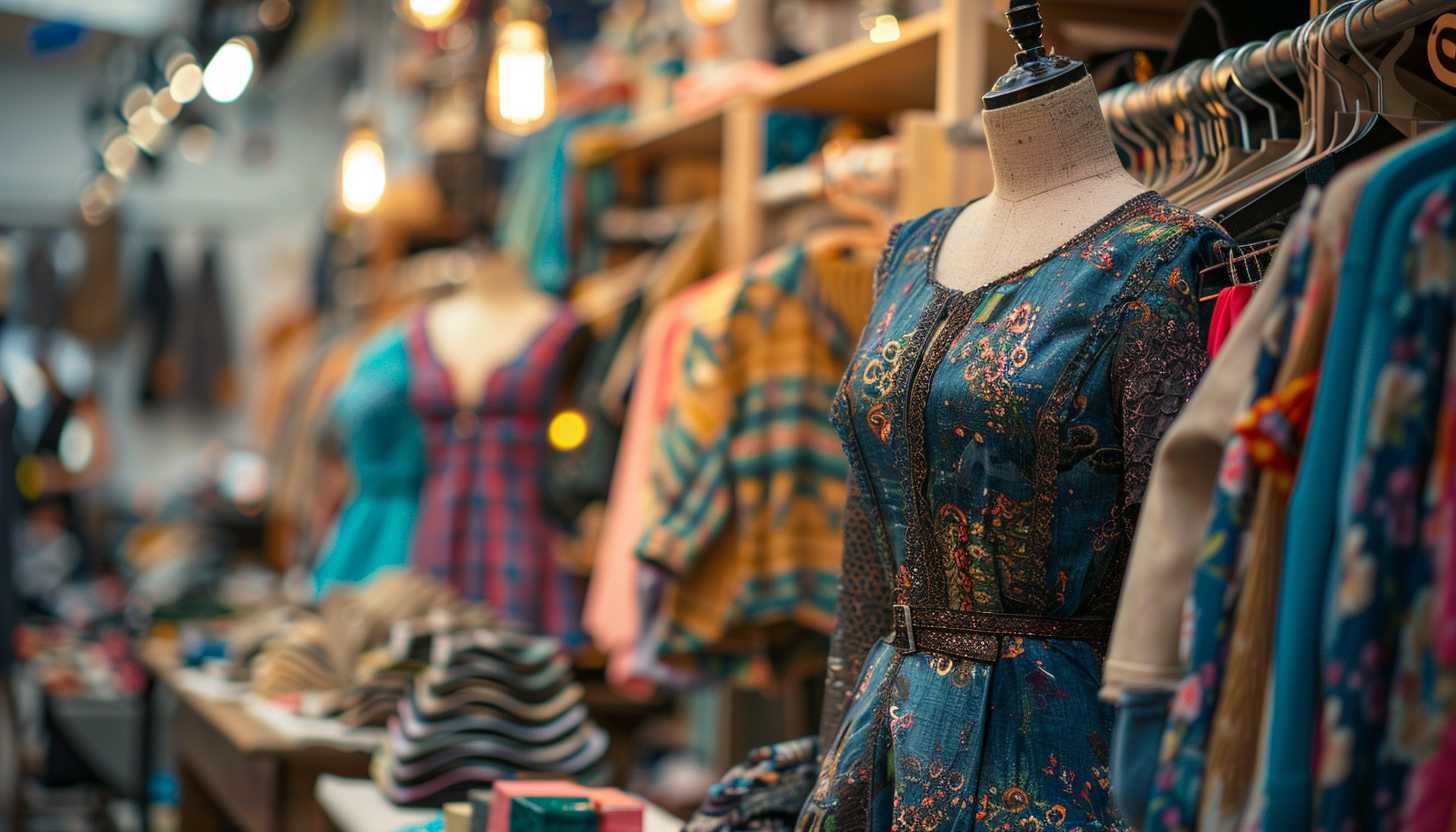
Attending trade shows to market your brand can be beneficial. Costs for booth setup and travel can start at $1,000 and go up to $10,000 for prominent industry events.
Given these more detailed examples and potential scenarios, the initial cost to start a clothing line could range from about $30,000 to $100,000+, significantly influenced by choices in quality, scale, and marketing strategies. Starting with a more focused collection and scaling up as the brand gains traction is a common approach to manage costs and risks effectively.
Launching a Shopify store? Don’t forget a professional logo to build trust and brand recognition. Get one instantly with Arvin AI!
Final Words
Starting a clothing business from home has never been more accessible, whether through print-on-demand, vintage resale, or handmade fashion. With the right strategy, branding, and marketing, you can carve out a niche and turn your passion into a thriving business. As consumer demand for unique, sustainable, and high-quality apparel continues to grow, now is the perfect time to take the leap into the fashion industry. Whether you’re selling one-of-a-kind handmade pieces or launching a scalable dropshipping brand, success lies in strong branding and a clear market position.
Your brand’s logo is a crucial part of establishing credibility and standing out in a competitive market. A well-designed logo reflects your business identity and builds trust with customers. Don’t let branding hold you back—create a professional logo effortlessly with Arvin AI Logo Designer and start your clothing brand with confidence.
FAQ
Firstly, decide on the business model, then create an online store. Next, use organic marketing (social media, influencers and SEO) to attract your customers. If you are on a tight budget, consider starting with dropshipping or selling through second hand platforms like Depop or Poshmark.
The cost varies based on the business model. A print-on-demand or dropshipping store can start with as little as $100–$500, covering website setup and sample products. A small-batch production line typically requires $2,000–$10,000 for materials, manufacturing, and branding. For those interested in mass production and wholesale, the startup cost can range from $10,000 to $50,000+, depending on inventory size and marketing expenses.
Activewear and athleisure are top choices due to the growing fitness industry, with brands like Lululemon leading the way. Streetwear and hype fashion also generate huge profits, with limited-edition drops creating demand. Sustainable fashion attracts eco-conscious buyers willing to pay premium prices. Customized and print-on-demand apparel allows for high margins with little upfront cost. Lastly, baby and maternity wear is a consistent seller due to repeat purchases and necessity.
Yes, you can create and sell your own handmade clothing. Many designers start small by sewing, knitting, or embroidering their own pieces and selling them on platforms like Etsy, Instagram, and Shopify. The key is to find a niche, whether it’s unique handmade designs, upcycled fashion, or custom-made outfits.
